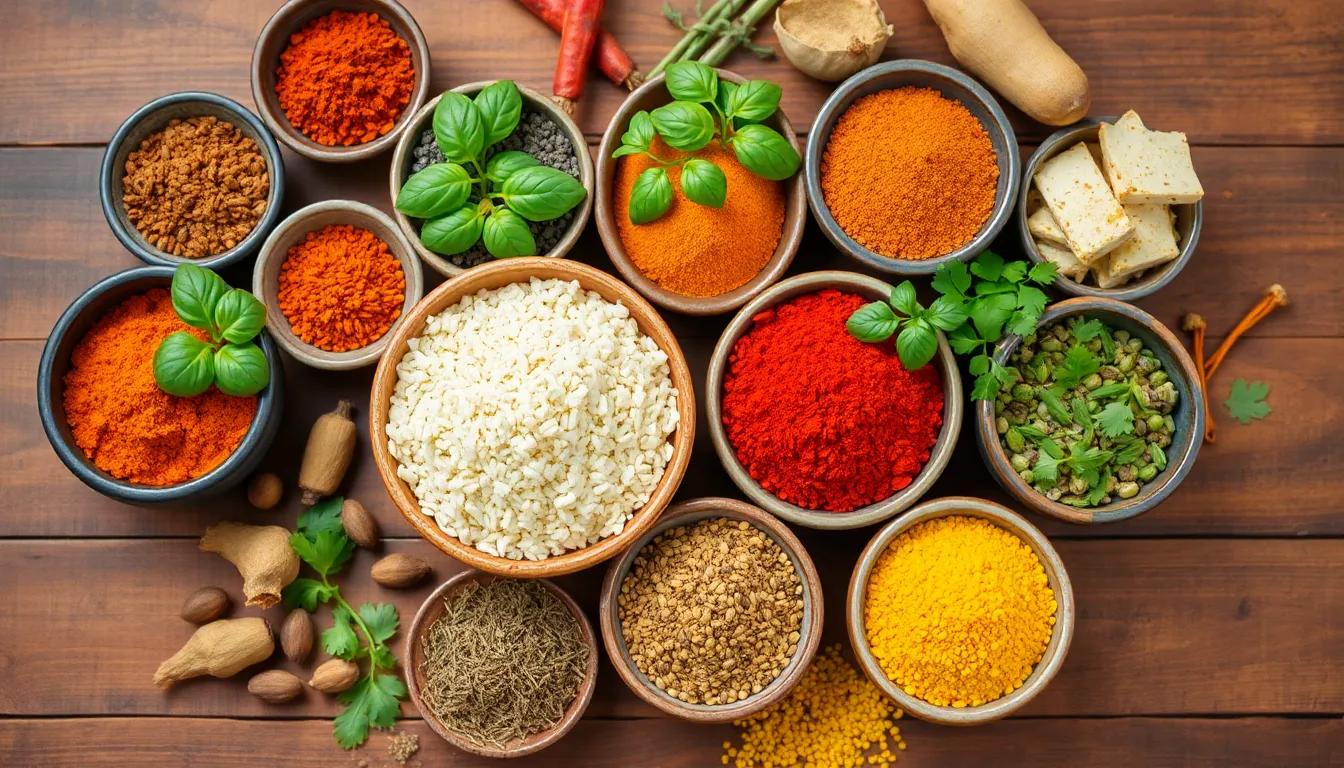Ever wondered how to whip up a delicious dish from halfway around the globe without turning your kitchen into a culinary disaster zone? International cooking can feel like a daunting adventure, but it doesn’t have to be! With a sprinkle of creativity and a dash of humor, anyone can transform their kitchen into a world-class eatery.
Table of Contents
ToggleUnderstanding International Cooking
International cooking invites exploration and innovation. It opens opportunities to experiment with various ingredients and techniques from different cultures. Different spices contribute unique flavors, enhancing each dish’s profile.
Researching authentic recipes provides a better understanding of cultural nuances. Traditional dishes often represent a region’s history, ingredients, and cooking methods. Selecting high-quality ingredients plays a crucial role in achieving authentic flavors.
Global cuisines are diverse, and each one presents its challenges and rewards. Adjusting cooking times and temperature settings helps accommodate specific recipes. Timing affects both flavor and texture, so thorough preparation enhances the overall experience.
Mastering a few staple techniques offers a strong foundation for any international dish. Techniques such as sautéing, steaming, and roasting are common across many cuisines. As recipes are tackled, familiarity with these methods increases confidence in executing a range of dishes.
Exploring local markets provides a source of fresh ingredients. Seasonal produce improves flavor profiles and supports sustainable practices. Communicating with vendors can lead to discovering unique items and learning about their traditional uses.
Experimentation with substitutions may yield interesting results. While recipes offer guidelines, individual tastes shape the final outcome. A willingness to adapt leads to personalized interpretations of beloved dishes.
Lastly, sharing meals with others fosters appreciation for different cultures. Gathering around a table to enjoy international cuisine encourages a sense of community. Through shared culinary experiences, people grow in their understanding and love for food from around the world.
Essential Ingredients in Global Cuisines

Understanding essential ingredients opens doors to exploring diverse global cuisines. Each culture relies on specific components to achieve its authentic flavors.
Common Spices and Herbs
Spices and herbs form the backbone of many dishes worldwide. Cumin enhances Indian curries while basil elevates Italian sauces. Paprika is a staple in Hungarian goulash, adding both color and depth. Cilantro features prominently in Latin American and Asian cuisines, imparting a fresh flavor. Oregano serves as a crucial ingredient in Mediterranean cooking, especially in Greek and Italian dishes. Turmeric contributes a warm, earthy flavor to curries and is known for its health benefits. These common spices create rich taste profiles across various culinary traditions.
Unique Ingredients to Explore
Exploring unique ingredients can transform international dishes. Jackfruit, popular in Southeast Asian fare, serves as a vegetarian substitute for pulled pork. Quinoa, native to South America, offers a protein-rich alternative to rice. Nutritional yeast provides a cheesy flavor in vegan cooking while being packed with nutrients. Gochujang, a Korean chili paste, adds depth and sweetness to marinades and sauces. Harissa, a North African chili blend, brings heat and complexity to stews and dips. These unique ingredients not only broaden culinary horizons but also spark creativity in the kitchen.
Techniques for International Dishes
Understanding different techniques enhances the ability to create international dishes. Exploring diverse cooking methods offers insights into various cuisines.
Cooking Methods Around the World
Grilling serves as a popular technique in many cultures, imparting a smoky flavor to meats and vegetables. Steaming maintains nutrients, often used in Asian cuisines, preserving the natural taste. Frying, whether deep or shallow, provides a crispy texture seen in dishes like tempura and samosas. Baking represents a common method for desserts in French and Italian kitchens, ensuring even cooking. Stir-frying exemplifies quick cooking in a small amount of oil, commonly used in Chinese recipes to retain crunch.
Food Presentation Styles
Plating plays a crucial role in culinary appeal, bringing attention to the dish’s colors and textures. Japanese cuisine emphasizes simplicity, using minimalistic presentations that highlight fresh ingredients. In contrast, Indian dishes often feature vibrant colors and intricate arrangements on the plate. European styles frequently focus on layering and garnishing, creating an artful experience. Street food around the world embraces casual presentation, allowing for easy enjoyment and quick consumption. Exploring these styles improves not just the dish but also the dining experience.
Cultural Considerations in Cooking
Cultural awareness enhances the cooking experience, fostering deeper connections to the food being prepared. Understanding traditions and adapting recipes to local tastes play crucial roles.
Respecting Traditions
Maintaining the essence of traditional recipes supports cultural integrity. Many cuisines carry historical significance, reflecting the identity of a community. Chefs often emphasize using authentic techniques that have been passed down through generations. Seasonal ingredients also contribute to the authenticity of traditional dishes. For instance, using local produce mirrors the heart of regional cuisines. When experimenting with international dishes, honoring these traditions enriches the culinary journey and keeps cultural narratives alive.
Adapting Recipes for Local Tastes
Modifying recipes to suit local preferences promotes culinary inclusivity. Each culture has unique taste profiles influenced by geography and history. Incorporating familiar ingredients can make international cuisine more approachable. Adjusting spices, for example, caters to diverse palates while still maintaining dish integrity. Local cooking methods can also enhance the final product, making it resonate more with community members. Flexibility allows each cook to create personalized versions of traditional dishes, fostering creativity while respecting the original intent.
Exploring international cooking opens up a world of flavors and traditions. By embracing creativity and experimenting with diverse ingredients and techniques, anyone can elevate their culinary skills. Understanding essential cooking methods and high-quality ingredients is crucial for achieving authentic tastes.
As cooks dive into different cuisines, they not only enhance their cooking repertoire but also foster cultural appreciation. Sharing these meals with others strengthens community bonds and creates memorable experiences. With each dish prepared, the joy of international cooking brings people together, celebrating the rich tapestry of global flavors.

